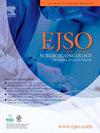重新思考TNM:基于肿瘤沉积物的预后模型可能改善结直肠癌的n分期
IF 2.9
2区 医学
Q2 ONCOLOGY
引用次数: 0
摘要
肿瘤沉积是影响结直肠癌患者长期肿瘤预后的重要负面因素,与淋巴结状态无关。已经提出了一些新的模型来进一步将肿瘤沉积物整合到tnm分期系统中,但它们的比较性能尚不清楚。本研究的目的是鉴定、比较和验证新的预后模型,将肿瘤沉积物纳入n期分类。方法通过文献综述,确定了将肿瘤沉积物或肿瘤沉积物计数纳入n分期的新型预后模型。使用瑞典结直肠癌登记处的患者数据验证了确定的模型,评估了总生存率、远处转移和局部复发。将预后表现与TNM n分期进行比较,使用Kaplan-Meier曲线进行视觉分析,使用Harrell's c指数进行判别能力,使用贝叶斯信息准则进行模型拟合。结果792篇文献中,17篇符合纳入标准,除TNM外,还形成了10个独特的模型。在患者队列中,排除后仍有26,970例患者,其中3,312例(12%)有肿瘤沉积。所有模型均优于TNM,其中2个模型较为突出;结合淋巴结和肿瘤沉积物计数的综合模型,以及考虑肿瘤沉积物数、阳性淋巴结数和提取淋巴结结构总数的比例模型。所有模型都提供了预测价值,但差异不大。结论本研究表明,虽然所有模型都优于TNM,但模型之间的预后差异很小。虽然肿瘤沉积物为高危患者提供了有价值的预后信息,但需要其他危险因素来进一步增强分期系统。本文章由计算机程序翻译,如有差异,请以英文原文为准。
Rethinking TNM: Tumor deposit-based prognostic models may improve N-staging in colorectal cancer
Introduction
Tumor deposits are an important negative prognostic factor for long-term oncological outcomes in colorectal cancer patients, independent of lymph node status. Several novel models have been proposed to further integrate tumor deposits into the TNM-staging system, but their comparative performance remains unclear. The aim of this study was to identify, compare and validate novel prognostic models incorporating tumor deposits for N-stage classification.
Methods
A scoping literature review identified novel prognostic models that incorporated tumor deposits or tumor deposit count into N-staging. The identified models were validated using patient data from the Swedish Colorectal Cancer Registry, assessing overall survival, distant metastasis, and local recurrence. Prognostic performance was compared to the TNM N-staging using Kaplan-Meier curves for visual analysis, Harrell's C-index for discriminative ability, and Bayesian information criterion for model fit.
Results
Of 792 articles, seventeen met the inclusion criteria, resulting in ten unique models in addition to TNM. For the patient cohort, 26,970 patients remained after exclusion, of whom 3,312 (12 %) had tumor deposits. All models were superior to TNM with two models standing out; an integrated model combining lymph node and tumor deposit count, and a ratio model considering number of tumor deposits, positive lymph nodes, and total number of extracted nodal structures. All models provided prognostic value, but differences were modest.
Conclusion
This study demonstrated that although all models outperformed TNM, prognostic differences between the models were small. While tumor deposits provide valuable prognostic information for high-risk patients, additional risk factors are required to further enhance the staging system.
求助全文
通过发布文献求助,成功后即可免费获取论文全文。
去求助
来源期刊

Ejso
医学-外科
CiteScore
6.40
自引率
2.60%
发文量
1148
审稿时长
41 days
期刊介绍:
JSO - European Journal of Surgical Oncology ("the Journal of Cancer Surgery") is the Official Journal of the European Society of Surgical Oncology and BASO ~ the Association for Cancer Surgery.
The EJSO aims to advance surgical oncology research and practice through the publication of original research articles, review articles, editorials, debates and correspondence.
 求助内容:
求助内容: 应助结果提醒方式:
应助结果提醒方式:


